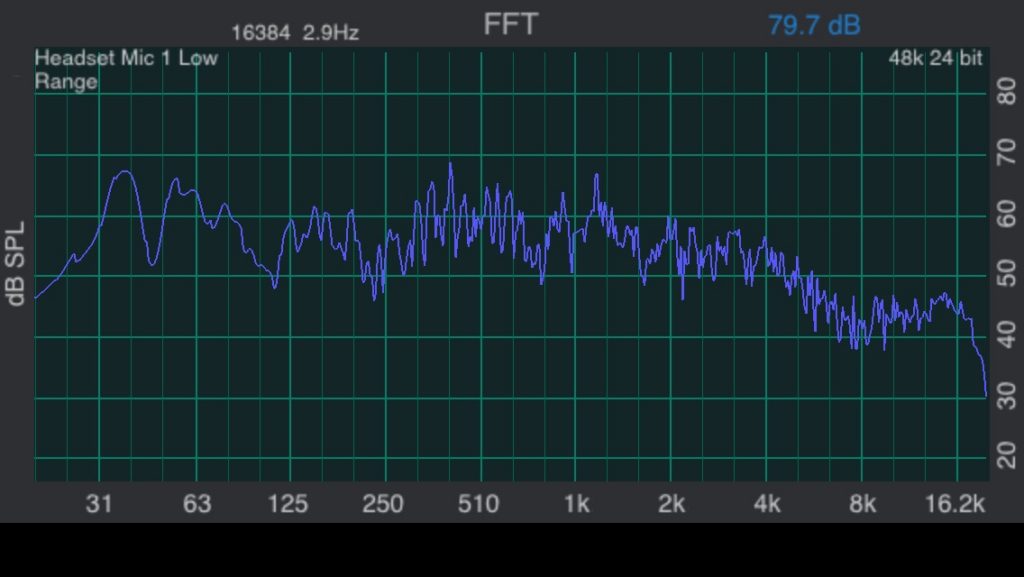The sound of electrostatic speakers is beautiful. Open and transparent are words almost everyone uses to describe their sound. I’d add natural to that list. There’s something about eliminating the box that also eliminates the resonances and problems boxes have if not dealt with properly. Electrostatics are near perfect, except for one huge Achille’s Heal; their off-axis response is dreadful.
On-axis, directly in front of the speaker, electrostatics can deliver a flat frequency response. As one moves off-axis, the high frequencies drop precipitously. It happens within a few degrees. By the time one is as little as 30° off-axis even the midrange is drooping. So what? So, unless you’re sitting exactly on-axis, forget about the beautiful sound. In a sense, they’re like giant headphones. Speakers playing in a room for just one, lonely listener is, well, selfish. But it’s worse than selfish, because even the sweet-spot listener is getting cheated.
The cheat? All that non-flat, off-axis, high-frequency-deficient sound is being emitted into the room along with the beautiful direct sound beaming at you. So what? That dark, muddy, off-axis sound is also being reflected around the room by the walls, the floor, the ceiling. The resultant reverberant sound field is a significant part of what you hear. In most cases, it’s more than fifty percent of what you hear. As it blends with the direct sound, it gives our ears mixed signals, good direct, first arrival sound; bad indirect, reverberant sound. Our brains have a hard time reconciling the conflict. This problem isn’t exclusive to electrostatics. All panel speakers, line source and most conventional box speakers exhibit this problem to varying degrees.
The graph above is an example of the in-room listening position frequency response of a typical quasi-dipole speaker. See how the response drops by 10 dB starting around 3 kHz, then levels off from 8 kHz out. If this speaker were dipole through its entire bandwidth, it would have an excellent room response. Unfortunately, the tweeter is not dipole, therefore where the tweeter starts taking over, about 3 kHz, the high frequency energy in the room plummets. This same problem occurs with regular direct radiating speakers, and although large panel speakers are dipole throughout their range, their beaming only makes the off-axis problem worse.
The real concern here is speaker power response. Power response is the sum of the energy output 360° around the speaker. It’s one of the most predictive measures of how a speaker will sound in a typical room.* The only way to get a truly natural sound is when the reverberant sound field is as correct (linear) as the direct on-axis sound. The ear must receive consistent signals. The only difference between the direct sound and the delayed reverberant sound should be the acoustic character of the room, which our ears have already evaluated within seconds of entering a room. We know what to expect from the room’s acoustics. We expect to hear that same acoustic character with music. If the power response of a speaker is off, then the outcome is a disconnect between what we expect to hear and what we actually hear. The discrepancy is consistently a strong lack of high frequencies, in other words, dark and muddy. To compensate, many manufacturers boost the treble response of their speakers. This may help make the reverberant field to sound a wee bit better, and help the composite of the direct/reflected to sound a wee bit better, but then the on-axis is off-color. It’s not a real solution.
So what? So, the power response is equally important as the on-axis response. This becomes even more obvious when listening outside of the room. Pay attention to how a speaker sounds by listening through an open doorway—some speakers still sound pretty good, others very disappointing. When doing this, you’ll be hearing only off-axis sound. Without equal attention to the power response, there’s a big, gaping gap in the sound quality presented by a loudspeaker. You can spend loads of money and time attempting to fix the problem with acoustic room treatment. The logic is that by reducing room reflections, it will reduce the off balance reverberant field. However, because of the nature of sound waves, high frequencies are easier to absorb than low frequencies, and very low frequencies (below about 150 Hz) are next to impossible to control. These facts mean that room treatment only exacerbates the problem. The room can’t be blamed anyway. The source of the problem is the speakers’ power response, and room treatment cannot correct the speakers’ output.
Power response also explains why measurements are frequently dismissed. Of course, when measurements are incomplete (on-axis only), when other important factors are ignored (power response among them), and when the whole picture isn’t viewed, a single measurement doesn’t tell the whole story. Without complete information, limited, out of context measurements are misleading. A good forensic investigator doesn’t only look at the puddle of blood directly under the victim’s body. He looks at the scatter patterns all around the entire room. Likewise, good sound looks at the whole room. So does Parallel Audio. [Learn more]
And more :
[EQ the Room?]
[Panoramic Power Response]
[Speaker Principles]
[Loudspeakers: What Should They Do?]
[Loudspeaker Power Response] and [Comb Filtering and Acoustic Interference]
[Acoustic Frontiers]
[The color of Sound : Hearing the Room]
*See Floyd Toole, Sound Reproduction: The Acoustics and Psychoacoustics of Loudspeakers and Rooms, Focal Press, 2008
![[art]by[odo]](https://artbyodo.net/wordpress/wp-content/uploads/2011/03/cropped-Header.jpg)
